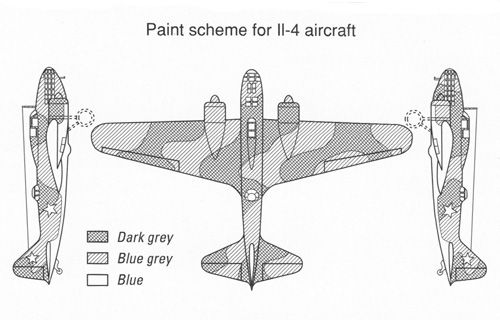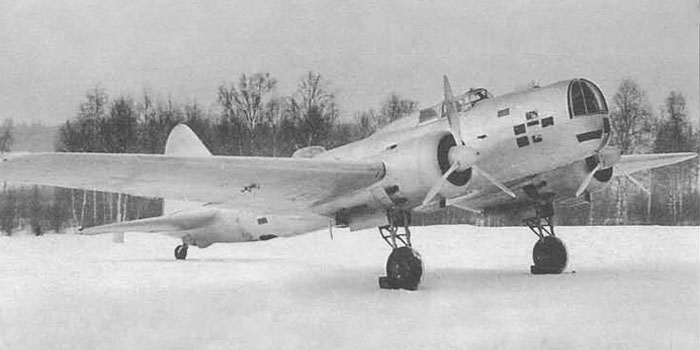
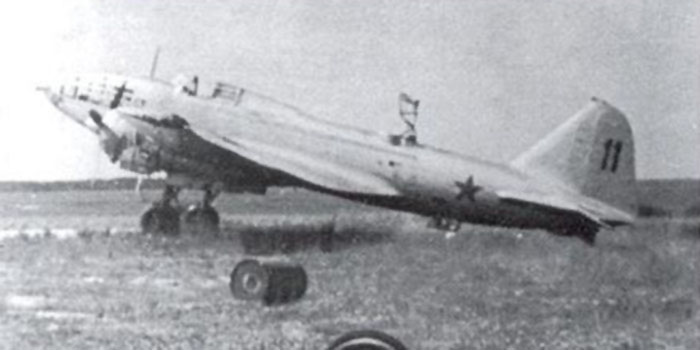
The standard painting of DB-3 bombers was AE-8 aluminium overall.
Below: a piece of a Soviet bomber shot down by Finnish AA and preserved in the Finnish Museum (courtesy of Jan Vihonen). Traces of ALG-1 yellow primer are visible under the aluminium paint. (courtesy Jan Vihonen)
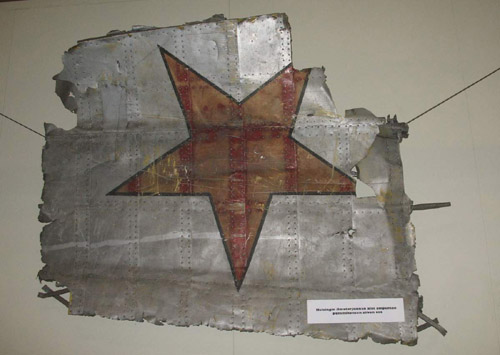
The combat planes built between June 1940 and July 1941 conformed to a standard with gloss green uppersurfaces and gloss light blue undersurfaces.
This change was related also to the development of new alkyd paints A-18f light blue and A-19f green for metal, and the introduction of AII light blue nitrocellulosic lacquer for wooden/fabric undersurfaces aside AII green already in use for uppersurfaces.
A new directive tried to make some order in the national insignas: before 1940 were used plain red stars, or red stars with black border, or red stars with black borders and thin black circle inside; in 1940, only red star with black outline became the official insigna.
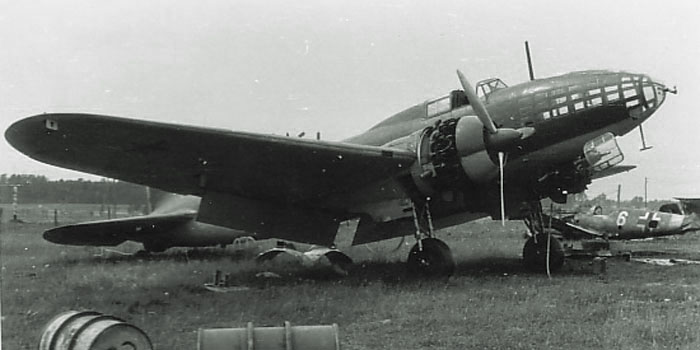
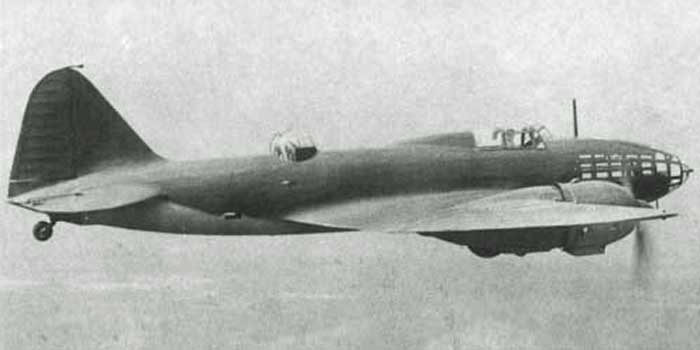
New DB-3F conformed to the new standard for metal planes: A-18f and A-19f.
Some already built planes could have been repainted in the new scheme, but the most part of DB-3 and DB-3f preserved the original aluminium livery till the war outbreak.
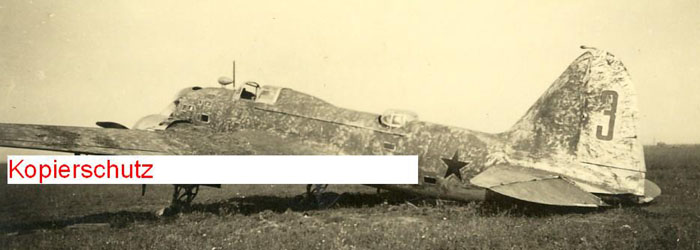
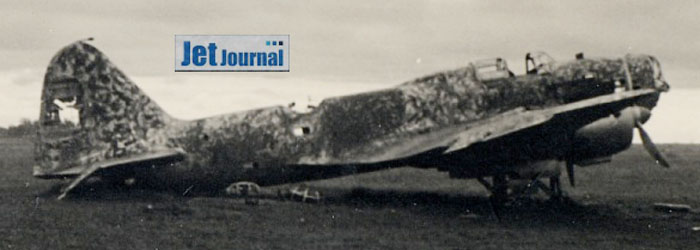
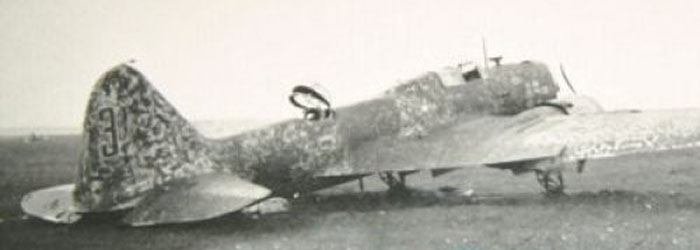
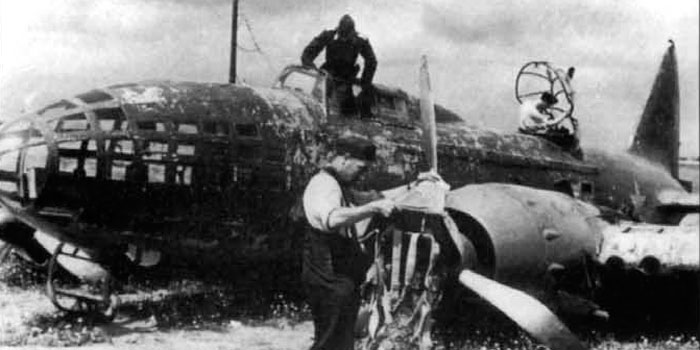
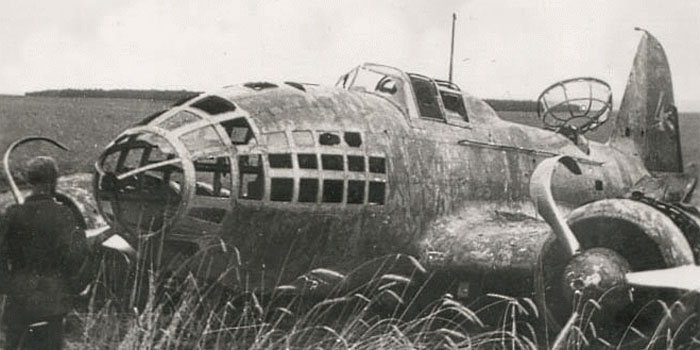
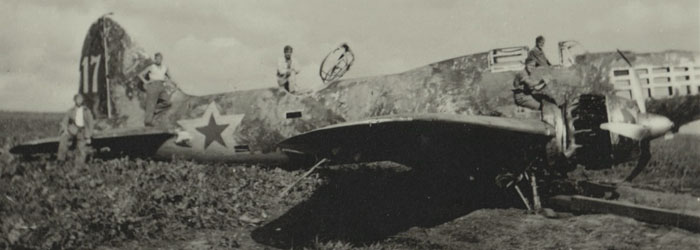

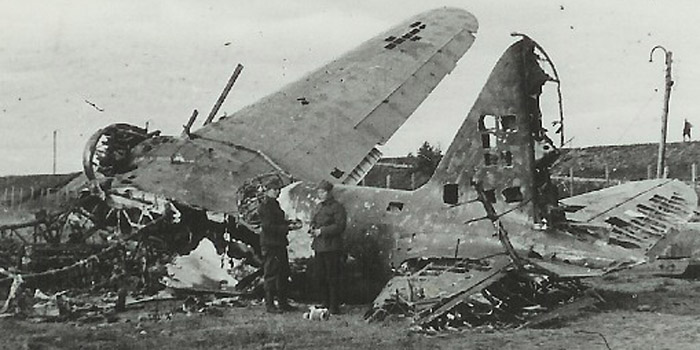


This plane looks to have brush-dotted on a silver background, possibly a measure to spare paint.
On 20 June 1941, the last day of peace, it was published an order of NKAP (the Ministry for Aeronautical Industry) to paint all planes with a new standard camouflage within one month.
Already existing planes with uniform green uppersurfaces had to be added with matt black (A-26m oil paint for metal planes, and AMT-6 nitrocellulosic lacquer for mixed construction planes). Undersurfaces presumably preserved the original finish in A-18F or AII light blue.
For newly built planes, the instructions said to utilize matt light blue for undersurfaces (not specified what type of paint, but all previous light blue paintings were gloss, so they have to be A-28m for all-metal planes and AMT-7 for mixed construction planes).
Apart for some Yaks, the first known photos of planes with the new green/black painting scheme are dated to July 13, 1941.
Many maintenance manuals of the first years of war describe these paints: dope AMT-4 green, AMT-6 black and AMT-7 blue enamel or oil A-24m, A-26m and A-28m of the same colours. Oil colors were less utilized, also because AMT colors can adhere well to primed metal surfaces.
Despite their name (M= matt), AMT colors were semigloss when new, and turned to matt finish with ageing. Occasionally, they could have been overpainted with a layer of gloss varnish AB-4-d to improve aerodinamicity and gain some speed.
While AMT-4 and 6 were codified in July 1941, AMT-7 was codified in August 1941, and is not mentioned on earlier manuals; earlier AII light blue remained in use in parallel with the darker AMT-7 in the first years of war.
Oil enamels were intended to be sprayed on the exterior metal surfaces, even unprimed. Painting with a brush meant poor paint properties, and was allowed only as a second choice, ex. for repairs.
Prop blades were now fully painted black.
The order of June 1941 changed the national marks of planes too. Red stars, of plan tipe or with thin black outline, were now placed in six positions:
- one on each side of fuselage,
- one on each side of rudder/stabilizer,
- one on the undersurface of each wing.
Note the deletion of stars over the wings, and the introduction of new ones on the tail.
Sometimes stars were outlined with white, silver or yellow borders, but this wasn't a standard.
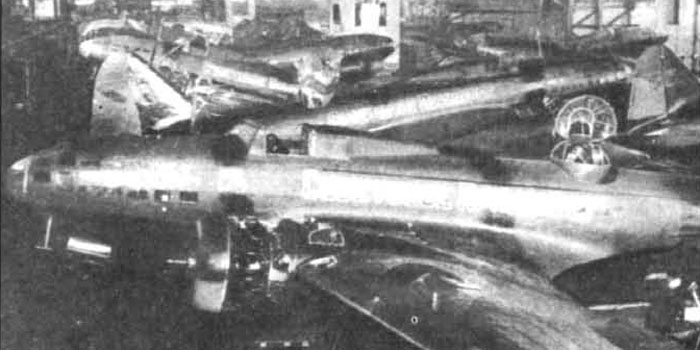
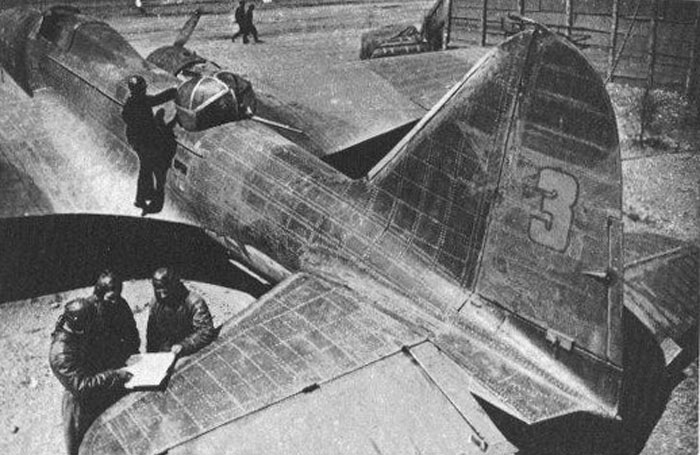
Left, up:
this photos of Il-4s in a factory doesnt leave any doubt about that camouflage was standardized, even if not strictly according to the template of NKAP. This camouflage is one of two utilized on Il-4s, and I'll describe it as 'green nose'.
Below right: a green-nosed Il-4 and the bombs ready to be loaded on. Looking at the engine cowling, we see the light color of the undersurfaces, although in shadow.
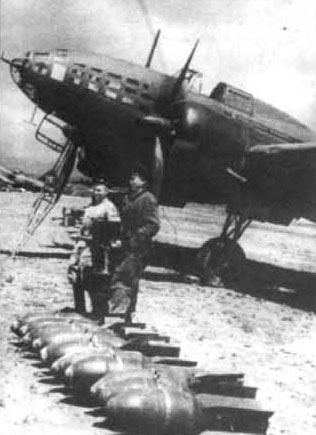
Left, down:
View from above of the tail of a green-nosed Il-4, somewhat atypical. On this plane the wingroot is green, and there is more black on the tail than on other similar planes, and even a black blotch behind the canopy. Undersurfaces were light blue. Note the discontinued camouflage on the rudders, very common on Il-4s, that let think that the control surfaces were painted separately with AMT colors, while the metallic skin of the plane was painted with oil enamels: green A-24m black A-26m, light blue , A-28m light blue.
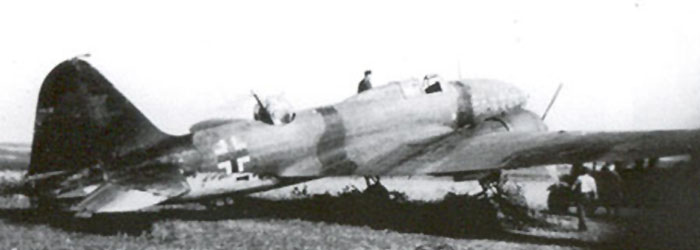
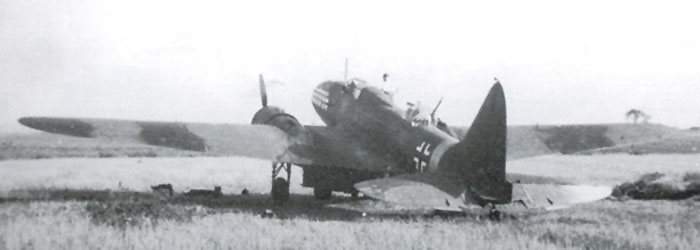
Il-4 captured and remarked by Germans. The green-nosed camouflage is particularly evident, but the engines outer side is green, unusually. Its undersurfaces are light blue.
Another Il-4 remarked, probably green-nosed. The original camo on the wings is particularly evident.

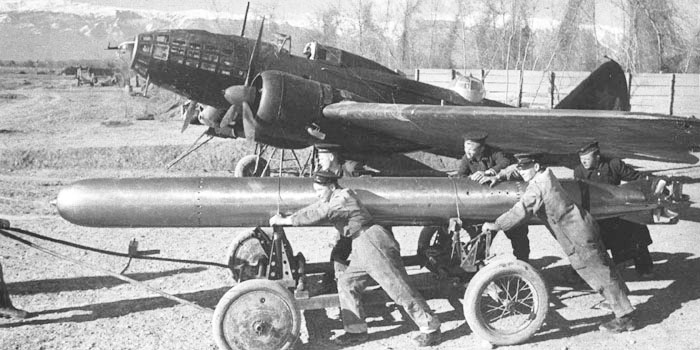
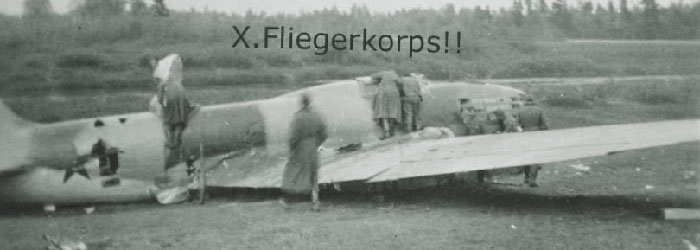
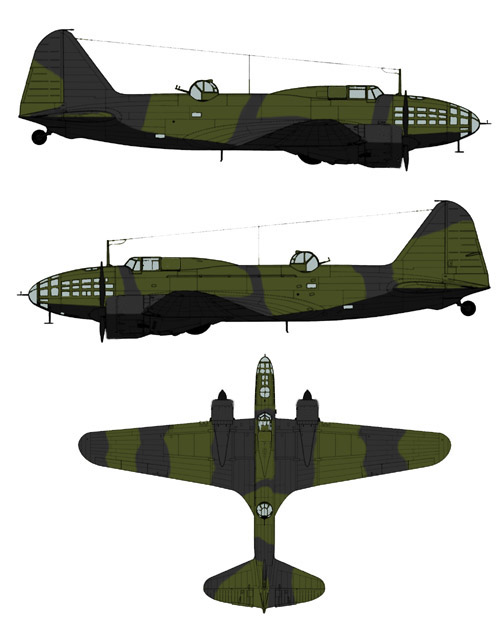
Il-4s were all-metal planes, so they were finished with oil paints A-24m green, A-26m black and A-28m light blue, except for the rudder andelevators that , being fabric-skinned, were finished with AMT-4 green, AMT-6 black and AMT-7 or AII light blue. Wide discontinuities of the camouflage are visible between these parts and the metallic parts of the tail, so wide and repeated that can be considered a standard.
Undersurfaces of Il-4 can be finished in light blue, but more often they're painted with Mk-8 or 'Noch' paint, that was darker than the black paints utilized for the upper camouflage.
The camo scheme for 1941-43 Il-4 is standardized into two variants:
1- green- nosed, characterized by a large black band on the rear fuselage;
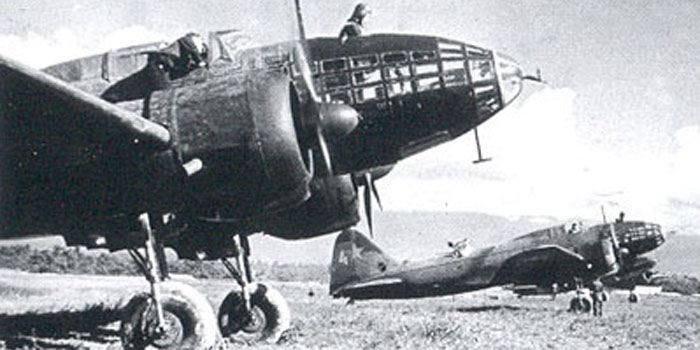
A variant of the black-green camouflage scheme is characterized by the black nose, and thge absebce of the black band in the rear fuselage.
The photo shows slack-nosed Il-4s.
Note the already explained discontinuities in the painting of rudder.
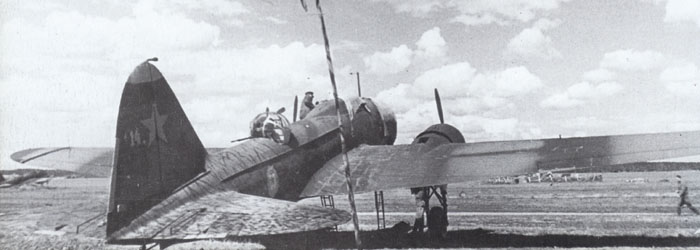
Black-nosed Il-4 n.14, with the guards emblem on the fuselage sides and black bands extended to the engines.
Although the nose is hidden, the camo pattern is recognizable for the lack of a black band immediately aft of the tail.

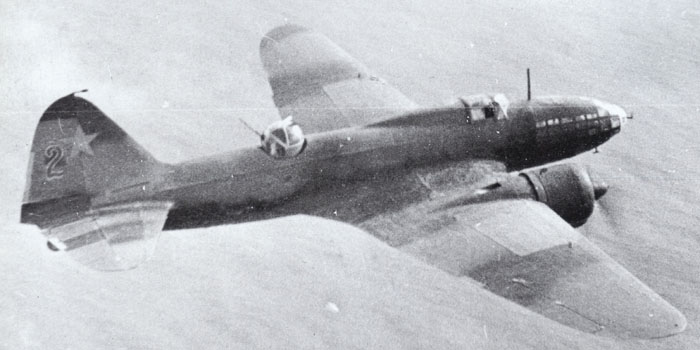
Black-nosed Il-4 n.2 (black with white outline) of Capt. Merguov of 1st MTAD of the Black Sea fleet, March 1943.
The image shows clearly the camo scheme. Wide panels on wings appear repainted with a lighter color, possibly red as an identification mark.
(Image from Red Stars of Geust, Keskinen, Stenman)
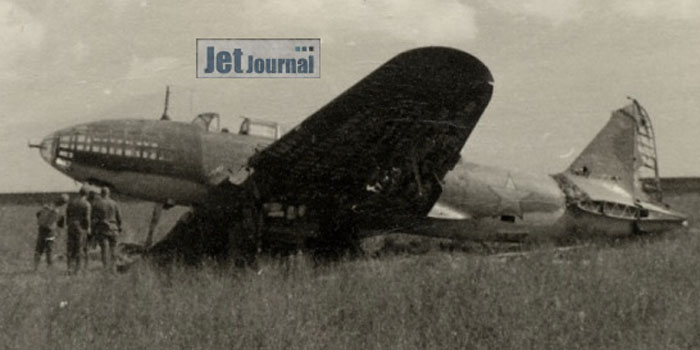

The usual template of black-nosed Il-4s.
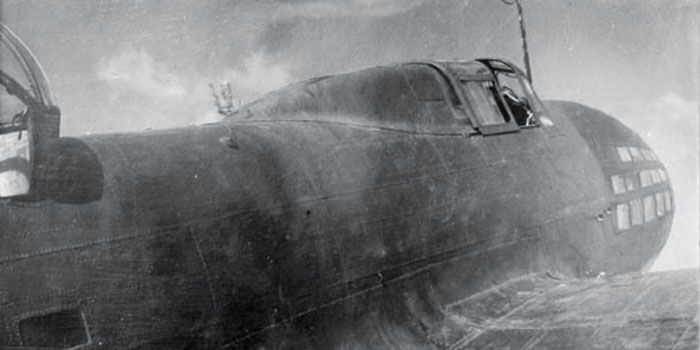
A variant of the black-nosed camouflage is shown on this photo: the black bands on wingroots were moved inside and extended till the top of the fuselage behind the canopy, eventually merging into one.
In this case, it's likely that the engine cowlings were green
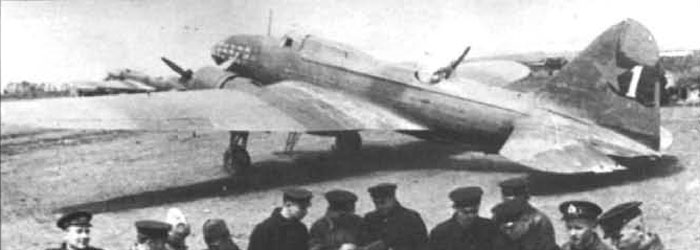
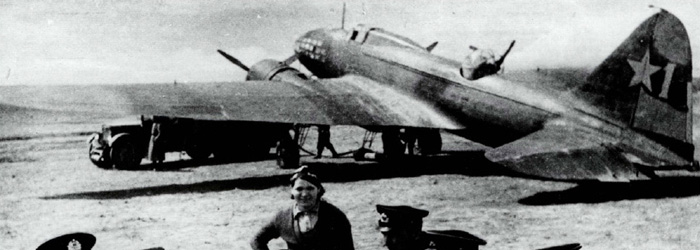
Interesting pictures of Il-4 white 1, that seems to wear a very faded black-green camo, perhaps roughly updated to 1943 standard with the addition of light brown. The black repainting on the rudder recalls a sort of flag.
The directive n°2389/0133 of July 3, 1943, gave new instructions to paint the Soviet warplanes:
- the upper and side surfaces of all fighter aircraft were to have two colors: greyish blue and dark grey in the same scheme;
- upper and side surfaces of all types of aircraft but fighters had to be camouflaged in green, light brown and dark grey (black for Il-4 and Pe-8);
- the red stars remained in the same six positions of before, but were addictioned with a thick white outline and, more externally, with a further thin red outline.
- the directive applied to new planes and those in repair shops; it wasn't required that operative units repainted all their planes.
| Nitro lacquers for mixed construction planes | Oil enamels for all-metal planes | |
| light brown | AMT-1 | A-21m |
| dark green | AMT-4 | A-24m |
| black | not needed | A-28m (for Il-4 and Pe-8 only) |
| light blue | AMT-7 | A-28m |
| blue-grey | AMT-11 | not needed for non-fighter planes |
| dark grey | AMT-12 | A-32m |
The directive assumed that the non-fighter planes had to be delivered with the new camouflage starting from August 1, 1943; in the days before, black had to be replaced with dark grey.
The directive included many templates, including two for Il-4s.
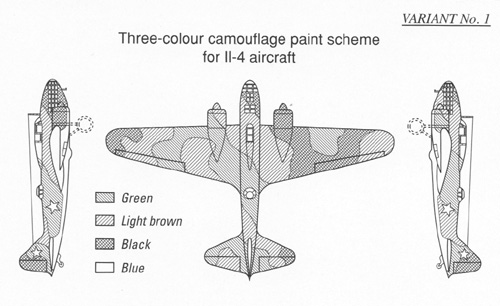
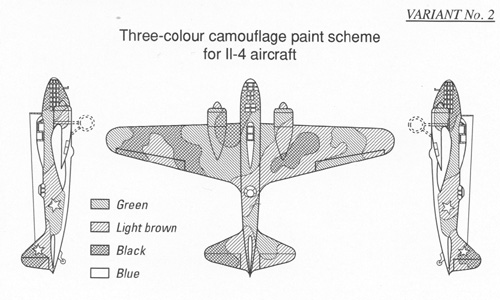
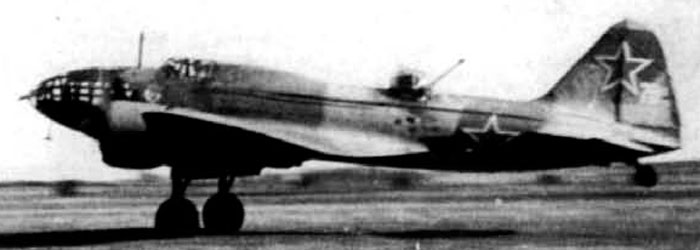

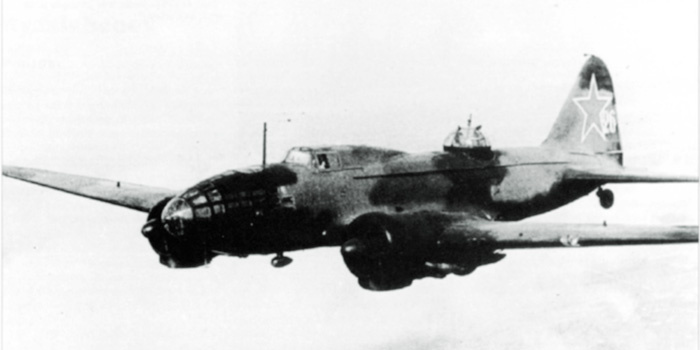
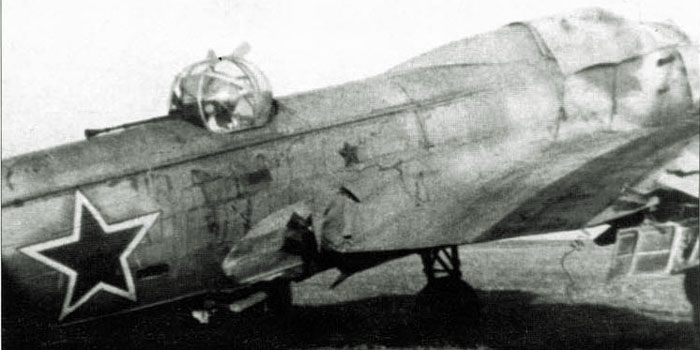
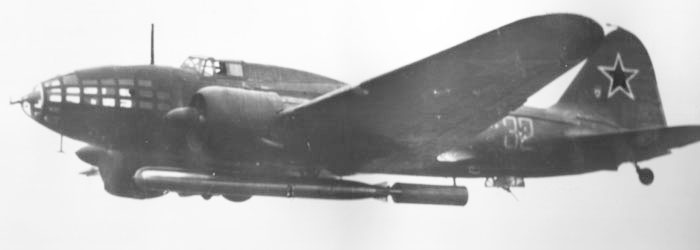
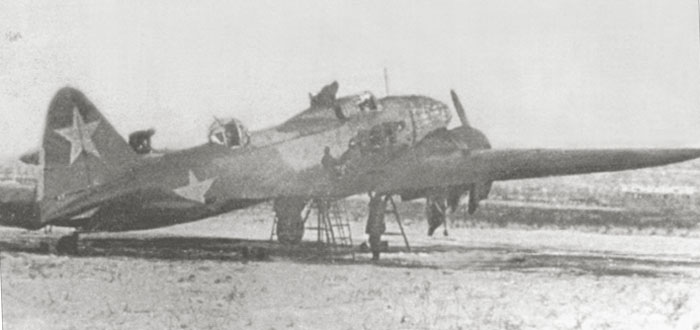
Il-4 on the airport of factory N° 64 at Voronece in early 1945. The camo doesn't look to follow faithfully neither of two templates, but looks closer to the second one.
Despite the inclusion of a template, there is not any photographic evidence that Il-4s were ever painted according to it.
